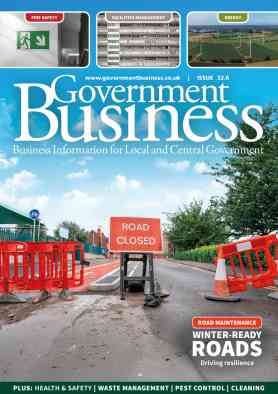
Keeping the UK’s lone workers safe
With approximately six million lone workers in the UK, it is imperative that employers mitigate the increased risk associated with lone working during the winter. James Kelly of the British Security Industry Association discusses lone working and some of the considerations that should be taken into account.
Sunday 25 October saw the official end of British summer time and the commencement of much darker, longer nights. It is estimated that approximately six million people in the UK regularly work in isolation or without direct supervision, often in places or circumstances that potentially puts them at risk. And the number of lone workers in the UK is expected to continue rising, largely driven by the advances in wireless communications technology and the rising cost of real estate, encouraging many employers to reduce their office space.
Therefore, there is a clear need for employers to consider the policies and procedures in place to safeguard employees whose role might involve working unsupervised.
Defining lone working
Although there is no common definition of a lone worker across Europe, there does appear to be some commonalities in the definition across the UK. The Health and Safety Executive (HSE) defines lone workers as ‘those who work by themselves without close or direct supervision’, whilst the NHS – the UK’s largest employer – defines a lone worker as ‘staff who work, either regularly or occasionally, on their own, without access to immediate support from work colleagues, managers or others. This could be inside a hospital or similar environment or in a community setting’.
Lone working, almost by definition, can be both intimidating and at times dangerous. The protection of lone workers, therefore involves a two-fold approach, not only to provide safeguards, but also to offer reassurances to the people involved.
The risks faced by lone workers usually fall within three main groups; physical or verbal violence and aggression; occupational risks such as slips, trips or falls; and personal well-being risks such as medical conditions. Whilst these risks aren’t exclusive to lone working, they are greater, and if an incident does occur, the alarm may not be raised until it is too late. These risks may be higher still as winter draws in and the nights become longer.
Employers have a legal obligation to keep their lone workers safe under the Health and Safety at Work Act 1974 and the Management of Health and Safety at Work Regulations 1999. Employers have a duty to assess risks to lone workers and to take steps to avoid or control risks where necessary, however, despite this, many businesses do not know what safety solutions provide adequate protection for their lone workers.
Part of the confusion lies in the issue of ownership; who’s responsibility is it? Who within the company should pay for lone worker security solutions? Is it a security expense, or a health and safety one? The private security industry has also struggled with this positioning, finding it hard to know who should be targeted within a company.
Addressing the issues
To address these important issues, the private security industry has worked with the police and end-users to develop a combination of practice, technology and standards, capable of providing an effective – and cost-effective – solution to reduce risk.
The British Security Industry Association’s (BSIA) Lone Worker section comprises of professional security companies who primarily provide lone worker solutions with the means to both summon help in an emergency and to collect information that can be used in evidence, if necessary. Members of the BSIA’s Lone Worker section have created a myriad of devices and applications, equipped with mobile phone technology that connects employees quickly and discreetly with an emergency response system that has direct links to the police.
Functions
Whilst there is a huge selection of lone worker devices available on the market, typically, devices provided by a credible supplier will all offer similar functional capabilities. Some of these functions include two-way audio connection between the Alarm Receiving Centre and the user; GPS tracking; ‘Man down’ alarms which automatically raise the alarm if a sudden impact is detected; and the ability to record evidence for prosecution purposes. Smartphone software applications are also available as an alternative to using a dedicated device, which is a viable option for those that do not want to carry around additional hardware.
The section has also led on the development of British Standard BS8484 – Code of Practice for the provision of Lone Worker Services, which forms the basis for police response to lone worker systems. This important standard is employed and adhered to by all credible suppliers in the industry; a Police response cannot be guaranteed by a supplier who isn’t audited and compliant with BS8484. Lone worker solutions which are compliant to BS8484 through audit ensures that at-risk employees are provided with the best and most cost-effective level of protection. Compliant solutions also protect employers from litigation and legislation.
The implementation of this standard assures the Police that requests for police response are properly verified, originate from an approved Alarm Receiving Centre (ARC) and contain the right information required by the Police. The result is that false alarms are kept to a minimum which justifies the commitment by the Police to provide an ‘immediate’ response where possible. The Police manage alarms and approval for the ‘immediate’ level of response through their Security Systems Policy, by issue of a Unique Reference Number (URN). For lone worker alarms, the policy demands that all links in the chain are complete before a URN can be issued to an ARC, i.e. the provider, device and ARC are all accredited to the appropriate parts of BS8484.
The BSIA’s lone worker section has also been very active in publishing guidance on a variety of lone working topics. Some of these publications include ‘An employees guide’ which offers guidance for employees on how to mitigate the risks of working alone; ‘An employers’ guide’ which offers easy-to-follow-guidance on what to look for when sourcing a supplier; and guides specific to certain industries such as the transport and hospitality sectors.
These guides are available to download from the BSIA’s website, free of charge and offer valuable guidance aimed at helping employers to ensure the safety of their employees.
Sourcing a supplier
When sourcing lone worker solutions, the BSIA recommends that providers are chosen based on their ability to demonstrate: Devices or smartphone applications certified to BS8484; That the provider is audited and certified to BS8484; That devices or smartphone applications are monitored by an Alarm Receiving Centre certificated to BS8484 (Part 6) and BS5979 (Cat II); and that solutions that fit the lone working application and risk profile of your workforce.
Ultimately, the most important factor in choosing any security product or service is that you are choosing from a reputable supplier that meets with the relevant British and European standards. Members of the BSIA are inspected to the highest standards and need to satisfy the Association that they meet with its strict eligibility criteria.
Further Information
bsia.co.uk


